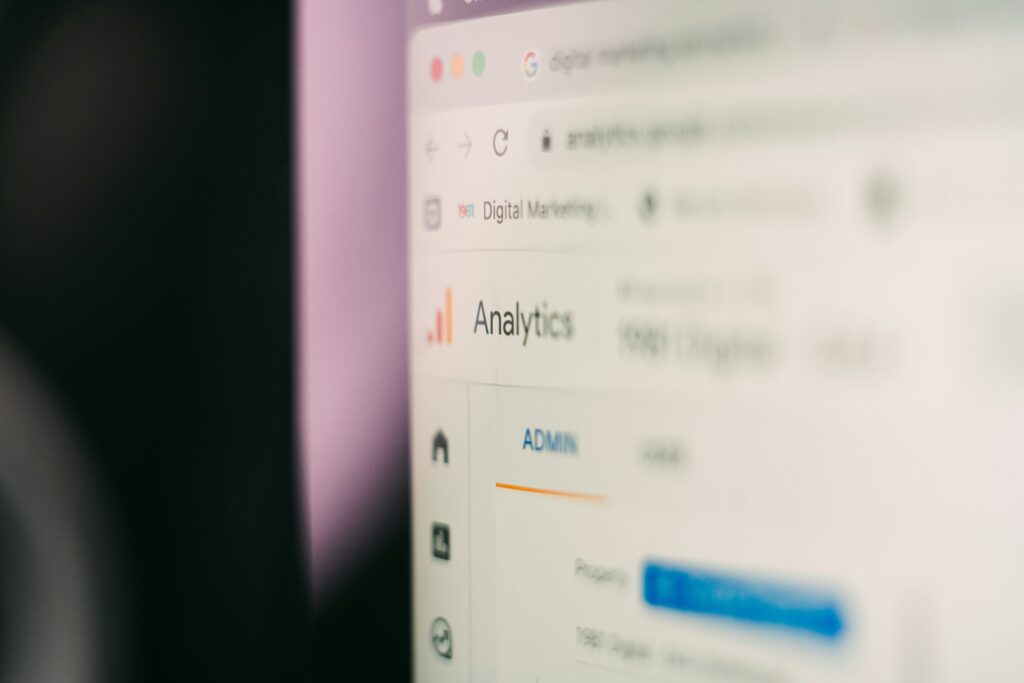Have you found yourself trying to navigate your Google Analytics 4 (GA4) dashboard, thinking, “This used to feel simpler”? If so, you’re not alone. When GA4 replaced Universal Analytics, it promised smarter insights, better privacy compliance and a sleeker, more flexible and future-ready tracking model. But for all its bells and whistles, GA4 isn’t everyone’s cup of data!
That’s why more businesses are weighing up GA4 vs. third-party analytics alternatives, trying to figure out if it’s worth sticking it out or if it’s time to check out what else is on the shelf.
So, is GA4 still the gold standard, or is it time to jump ship? Below, WRD weighs up GA4 vs. third-party analytics alternatives to help you decide.
A Quick GA4 Refresher

GA4 is Google’s big update to Universal Analytics (which was sunsetted in July 2024), and it’s all about preparing for a future with fewer third-party cookies and more complex user journeys.
It uses an event-based tracking model rather than the old pageview-centric one, giving businesses more granular data across websites, apps, and devices.
And while it might feel like a bit of a learning curve, it does pack a punch.
Why GA4 Is Still the Industry Favourite
Despite a lot of marketers having teething problems with the adoption of GA4, many have stuck with it. When comparing GA4 vs. third-party analytics alternatives, here’s where it excels:
Privacy-first features
GA4 is built with data privacy in mind. It doesn’t store IP addresses (they’re anonymised automatically), and you can enable a consent mode to ensure user choices are respected as they move around your website.
Data retention is limited by default, too. That means less personal info floating around, helping you stay on the right side of GDPR and other privacy laws.
Event-based tracking
Every interaction, from clicks to scrolls, is an ‘event’ in GA4. So, you’re not just watching what users see but what they do.
Cross-platform tracking
Users don’t just live in one place anymore. GA4 lets you track activity across websites, mobile apps, and even different devices, all in one place. You’re no longer guessing which touchpoint worked; GA4 gives you the whole story. And with the right Google Tag Manager setup, you can ensure every touchpoint is tracked
Google Ads integration
GA4 plays very nicely with Google Ads. You can build audiences, measure conversions, and optimise performance without switching tabs. Less guesswork, more conversions, and a better-spent budget!
AI-driven insights
Using machine learning, GA4 can flag anomalies, forecast behaviour, and even predict churn without you needing to manually crunch the numbers. Features like Predictive Metrics and Analytics Insights become your own data analysts on autopilot, guiding your next moves.
Custom reporting
GA4’s Explorations feature (formerly Analysis Hub) gives you custom funnels, pathing, segment overlaps and slick visualisations. No more one-size-fits-all dashboards; you can build your data storytelling exactly how you need it.
Why Some Are Eyeing the Exit

Despite the pros, not everyone’s in love with GA4. Here’s why some marketers and developers are delving into GA4 vs. third-party analytics alternatives more seriously:
Limited user tracking
GA4 is privacy-conscious by design, but that means less detail on individual users. If you need highly granular user-level data, it might feel like a step back.
Data delays
Unlike Universal Analytics’ updates, which are delivered in just a few hours, GA4 can take up to 48 hours to show full data. That’s a long wait when you’ve got campaigns to optimise!
You don’t fully own the data
You’ve got access and can export what you need (especially if you’re using BigQuery), but the data still lives on Google’s terms in Google’s cloud. If total independence is a priority, GA4 might feel a bit limiting.
Interface frustrations
GA4’s dashboard isn’t exactly plug-and-play. Many users find it unintuitive, with key metrics hidden behind layers of menus or only accessible through custom reports.
If you’d like a hand getting to grips with GA4, check out our Google Analytics Training!
Privacy trade-offs
GA4’s privacy-first approach keeps things compliant, but it also means less visibility into individual users. So, if you’re after raw data or detailed user tracking, GA4 could be a little restrictive.
Data sampling
When working with large datasets, GA4 can sample your data. That means the numbers you see aren’t always the whole picture, with valuable details sacrificed to make things run faster. Using BigQuery is one way to get around this problem.
While GA4 offers flexibility, setting it up correctly isn’t always straightforward, which is why our analytics consultancy services include GA4 configuration, validation, and ongoing reporting support. So, if GA4 doesn’t quite work for you, what are the alternatives?
Exploring Third-Party Analytics Alternatives
If you’re not gelling with GA4, there’s a growing list of tools that might be a better fit. When it comes to GA4 vs. third-party analytics alternatives, here are some of the top contenders:
1. Matomo
Best for: Full data ownership
Open-source and self-hostable, Matomo gives you control and privacy with no data sampling.
Watch out for: A steeper learning curve if you go self-hosted.
2. Plausible
Best for: Lightweight, privacy-first insights
No cookies, no fuss, just clean, compliant dashboards.
Drawback: Limited features compared to GA4.
3. Amplitude
Best for: SaaS and product-led teams
Brilliant at deep behavioural tracking and retention analysis.
Not ideal if: You’re on a tight budget; pricing can scale up fast.
4. Piwik PRO
Best for: Regulated industries such as IT & Software
Enterprise-level privacy with GDPR & HIPAA compliance and on-prem hosting options.
Downside: Less flexibility and less transparent pricing.
5. Umami
Best for: Developers who want privacy, ease and efficiency
Open-source, cookie-free, and beautifully minimal.
Heads up: Light on advanced features and integrations.
| Tool | Best For | Key Benefits | Drawbacks / Watchouts |
|---|---|---|---|
| Matomo | Full data ownership | Open-source, self-hostable, no data sampling | Steeper learning curve for self-hosted setup |
| Plausible | Lightweight, privacy-first insights | Cookie-free, compliant, simple dashboards | Fewer features than GA4 |
| Amplitude | SaaS and product-led teams | Excellent behavioural tracking and retention analysis | Can become expensive quickly |
| Piwik PRO | Regulated industries | GDPR/HIPAA compliant, enterprise-ready, on-prem options | Less flexibility, opaque pricing |
| Umami | Developers wanting privacy and simplicity | Open-source, minimal, cookie-free | Lacks advanced features and integrations |
Also, remember to factor in the price tag when exploring these GA4 alternatives. Many have a free starter version, but with some, costs can soar quickly depending on your needs.
So, GA4 or Something Else?
It really comes down to what you want from your analytics setup. When comparing GA4 vs. third-party analytics alternatives, you need to look further than the features. Privacy, flexibility, usability, control, and, of course, budget all need to be included in the equation.
Our advice?
Stick with GA4 if:
- You rely heavily on Google Ads
- You want advanced, predictive analytics
- You like the fact it’s free (up to a certain point!)
- You’re already comfortable navigating the GA ecosystem
Try a GA4 alternative if:
- Data ownership is a top priority
- You want visibility into all traffic sources, including cookieless users
- You need access to user IP addresses (GA4 anonymises this by default)
- You need clearer, simpler reporting
- Your team struggles with GA4’s interface
- You need deeper behavioural insight, crucial if you’re actively working on landing page optimisation
- You want to self-host or reduce reliance on Google
When it comes to GA4 vs. third-party analytics alternatives, there’s no one-size-fits-all answer. The analytics platform you choose should align with your website’s performance and technical structure to give your team the clarity and control it needs to make smart decisions without drowning in dashboards, red tape or ever-climbing costs.
Your data platform choice directly impacts how accurately you measure ROI across channels like Google Ads and paid social campaigns, where attribution granularity is essential. If you want clearer insights (and less dashboard doom-scrolling), drop us a message at WRD, and let’s talk about how to get analytics that work for you.



